Aglaonema is a beautiful shade-loving decorative and deciduous plant, whose homeland is India and the islands of the Malay archipelago. Under natural conditions, the bush grows in the lower tier of the forest on the banks of streams and rivers, where there is very little light. Caring for aglaonema at home is not difficult. The flower is quite unpretentious and feels good in apartments, where often there is not enough sunlight.
Material Content:
Varieties and types
Aglaonema looks like a compact bush up to 50-60 cm tall with beautiful oblong-lanceolate leaves of different shades of green.
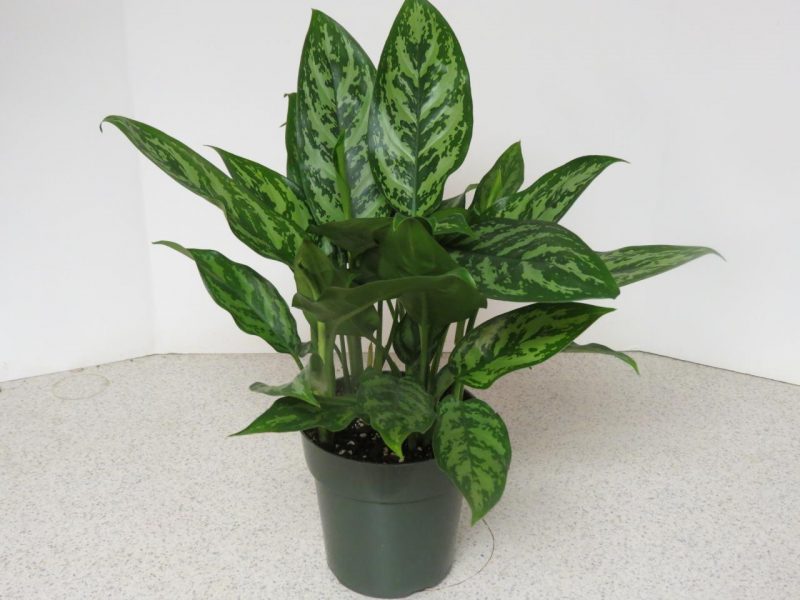
Among the undersized varieties with a maximum height of 25 cm, the following should be distinguished:
- Short cover. Leaves with white veins have an oblong shape. The bushes grow slowly, so it’s better to plant several copies in one pot, then they will look much better.
- Ribbed. Miniature bush with heart-shaped leaves. Coloring can vary from white to green with different splashes.
- Rounded. A distinctive feature is the beautiful leaves of black and scarlet color, mottled with pink stripes.
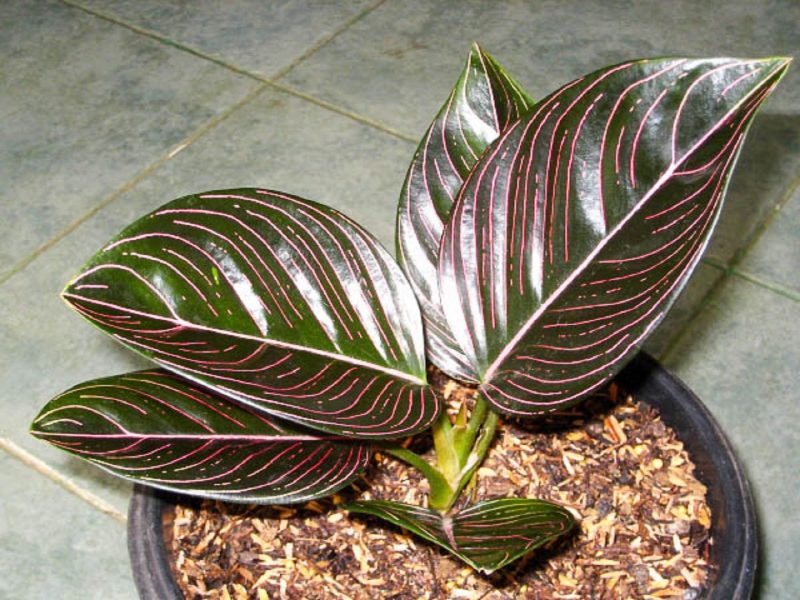
Most often, medium-sized varieties are chosen as indoor plants:
- Aglaonema Maria. It has dense dark green foliage. It can grow even under artificial lighting.
- Tribe. It features relatively short leaves with a silver pattern.
- Silver Queen. The maximum height is 40 cm. It best reveals the beauty of its silver-blue leaves in a bright place.
Tall owners can afford only the owners of large apartments:
- Pattaya Beauty. Large leaves with a silvery center grow on thin stems. Differs in unpretentiousness. With age, the plant becomes like a palm tree, as the lower leaves fall off.
- Friedman The maximum height is 1.5 m. On wide leaves with wavy edges, light gray spots and specks are clearly visible.
Plants of these varieties look good as soloists.
Separately, it is necessary to mention the aglaonem of Crete. This plant changes the color of its leaves with age: in youth, they are red, then covered with greenish spots.
Aglaonema - growing characteristics
This beautiful plant is known for its beneficial properties. It cleans the air of the harmful components that modern furniture, plastic and paint often emit.

It must be remembered that plants with green foliage grow well and with a lack of lighting, and species with variegated leaves need a brighter light. If such plants do not have enough light, the beauty of their leaves will fade.
Since the aglaonema is a resident of tropical forests, the main thing for it is moisture, heat and the absence of cold drafts and the scorching sun.

How often to feed the plant, everyone decides for himself. But aglaonema responds well to timely and regular feeding. Foliar top dressing in the form of spraying helps maintain the decorative leaf. Such procedures are carried out in the evening or in cloudy weather. If sunshine falls on leaves sprayed with a nutrient solution, burns will appear.
Home Care
As a houseplant, they often buy changeable aglaonema. Its green leaves with silvery edges can enliven even a dark corner. The flower grows best in slightly shaded areas. In no case should you put the plant on sunny windows.
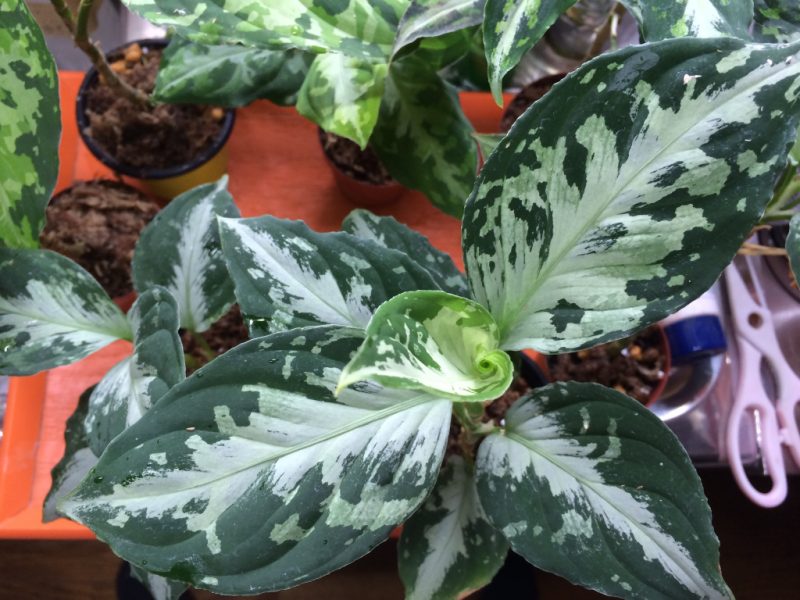
The optimum temperature in the warm season varies from 21 to 25 ° C. In winter, the plant needs to provide a lower temperature (but not less than 16 ° C). Sudden changes in temperature should be excluded. During the heating season, it is best to keep the bush as far away from radiators as possible, because the leaves can dry out due to excessive air dryness.
The plant responds well to regular spraying. Sometimes a bush can be put in the bathroom and shower him.
Watering should be plentiful and timely. The plant prefers moist soil, but without stagnation of water. The lower the room temperature, the less often you need to water the flower. You can not water the plant with cold water from the tap. It must be settled and acquire room temperature.
Flower Transplant Rules
After purchase, the flower is transplanted into a permanent pot. The new tank should be 2-3 centimeters larger in diameter compared to the previous one. Mandatory drainage of brick chips. The soil should be loose, light and nutritious. The plant grows well in hydroponics.
Young bushes require frequent transplantation - about 1 time in 12 months. It is better to do this procedure in the spring. Adult specimens can go without a transplant for 3-5 years.
How does aglaonema bloom?
A plant blooms only when its conditions are as close to natural as possible. But the flower is nondescript and is an inflorescence-ear.
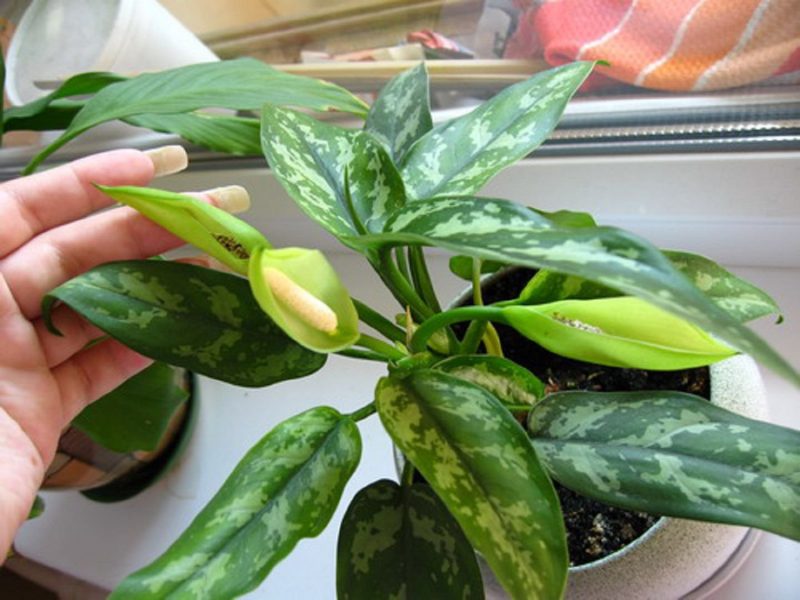
After flowering, scarlet berries are tied, in which there are seeds suitable for propagation.
Since aglaonema is a decorative deciduous plant, it is better to cut off the flowers that have appeared immediately. This stimulates the appearance of new buds, the bush begins to grow rapidly and become more magnificent.
Flower propagation
The plant can be propagated by seeds, cuttings or dividing the bush. The last way is the easiest. The main thing is to handle the plant very carefully. On adult specimens, small processes are often formed. They are separated and planted in a suitable container. For the first time, the processes are covered with a jar.

Lateral and apical shoots are the best material for cuttings. Place the cut must be sprinkled with charcoal and dry. Harvested cuttings are planted in a light nutrient substrate and regularly watered.
This method is good in that it allows you to get a large amount of planting material. However, it should be borne in mind that seedlings grown from seeds grow and develop much more slowly. Seeds are bought or harvested from a home plant, washed, dried and planted immediately, as long-term storage reduces germination.
Pest and Disease Control
The plant rarely gets sick. Of the fungal diseases, gray rot and leaf spot are the most common, which are easy to get rid of with fungicides. To prevent such diseases, you need to monitor temperature, humidity and provide good ventilation.
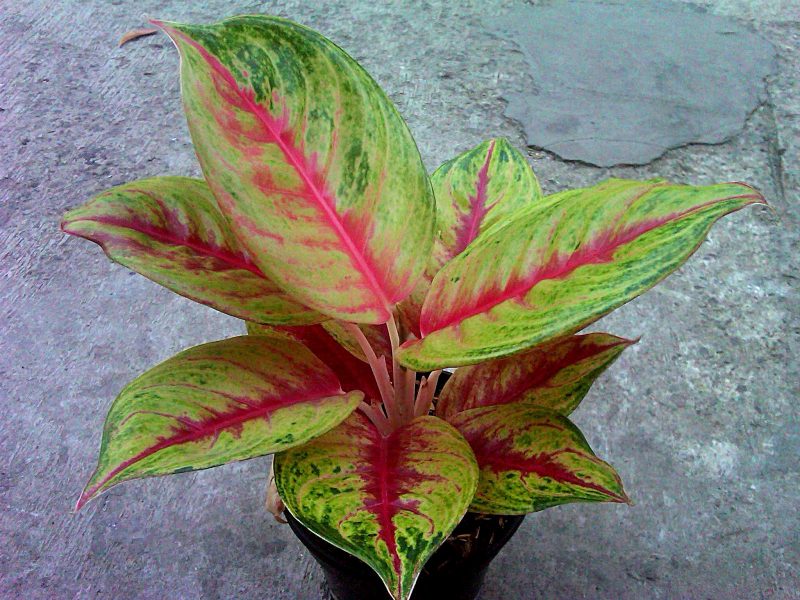
Sometimes the bush is affected by aphids, thrips, scabies and ticks. Special preparations and frequent inspection of the plant will help to detect the problem in time. The signal of infection can be falling of leaves, their deformation or drying out.
Problems that flower growers may encounter

- Watering with a high chlorine content is considered the main cause of yellow spots on the leaves. Our advice. Before watering, it is recommended to defend the water.
- If the edges of the leaves dry out and deform, then the room has very dry air. The plant needs to be sprayed more often.
- Sluggish leaves indicate that the plant was standing in a draft. The affected bush must urgently be moved to a quiet and sheltered from the wind place.
Aglaonema - unpretentious plant. Therefore, even with a minimum of care, she will delight her eyes with her beautiful and large leaves.












